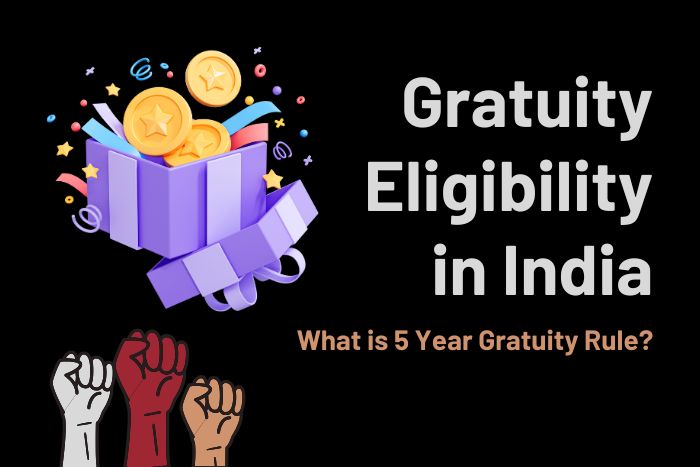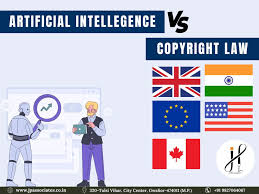M. Chockalingam, J.@mdashChallenge is made to the Judgment of the Principal Sessions Division, Dindigul District dated 28.9.2006 made in S.C. No. 172 of 2005 whereby the sole accused/appellant stood charged, tried and found guilty of murder and awarded life imprisonment along with a fine of Rs. 5,000/-, in default, to undergo three years rigorous imprisonment, apart from five years rigorous imprisonment and fine of Rs. 3,000/- on each count u/s 307 IPC (2 counts).
2. The short facts that are necessary for the disposal of this appeal can be stated as follows:
(i) PW.1 is the wife of the deceased, Chinnakkalai. PW.2 is the daughter of PW.1 and the deceased and she was given in marriage to the accused/appellant. He was a native of Vellottam. PW.3 is the son of PW.1. From the time of marriage, he did not maintain her properly and hence, she used to go and stay in her parental home. On 12.3.2005, that was on the date of occurrence, in the morning hours, he came to his father-in-law''s house and asked to send his wife along with him and he was informed that his father-in-law, the deceased had gone out and she would come after her father''s return and in the evening hours, at 6.00 p.m, he came to his father-in-law''s house and asked his wife to come with him but he was informed that since he was always quarrelling with her, after convening a panchayat, she would be sent and thereafter, at 9.00 p.m, he came with an aruval, MO.1 and attacked the deceased indiscriminately and when PW.2 and PW.3 intervened, they were also attacked and they also sustained injuries.
(ii) Immediately, PW.1 rushed to the respondent police station along with PW.2 and PW.3 where PW.18, Sub-Inspector of Police was on duty and gave a complaint, Ex.P.1 and on strength of which a case was registered in Crime No. 55/2005 under Sections 324 and 302 IPC. Express F.I.R., Ex.P.23, was despatched to the Court.
(iii) On receipt of the copy of the F.I.R, the Inspector of Police, PW.19, took up investigation and proceeded to the spot, made an inspection and prepared an Observation Mahazar Ex.p.11 and Rough Sketch Ex.P.24 and he also conducted inquest over the dead body of the deceased in the presence of witnesses and panchayatdars and the inquest report was marked as Ex.P.25. The body was subjected to Post-Mortem by PW.12, attached to the Government Hospital, Dindigul, and he gave a Post-Mortem Certificate, which was marked as Ex.P.17 wherein it is mentioned that the deceased would appear to have died of shock and haemorrhage due to injuries sustained and injuries due to vital organs, about 12 to 16 hours prior to autopsy.
(iv) Pending investigation, the accused was arrested on 16.3.2005. When he was examined, he came to give a confessional statement in the presence of witnesses and recorded the same and the admissible portion of which was marked as Ex.P.5 and he produced the Aruval, MO.1 used in the commission of offence and the same was recovered under the cover of Mahazar Ex.P.28.
(v) On completion of the investigation, the investigating officer filed a final report. The case was committed to the Court of Sessions. Necessary charges were framed against the accused.
3. In order to substantiate the charges levelled against the accused, the prosecution examined 19 witnesses and relied on 28 Exhibits and 10 M Os. On completion of the evidence on the side of the prosecution, the accused was questioned u/s 313 Code of Criminal Procedure on the incriminating circumstances found in the evidence of the prosecution witnesses, which was denied on the part of the accused. Neither witness was examined nor document was marked on the side of the defence. The trial Court after hearing the arguments advanced by either side and on considering the materials available on record, took the view that the prosecution has proved its case beyond reasonable doubts in respect of the charges levelled against the accused and found the accused guilty of the charges and awarded punishments as referred to above.
4. Advancing the arguments on behalf of the accused/appellant, the learned Counsel appearing for the appellant would submit that-
(i) in the instant case, the prosecution had failed to prove its case beyond reasonable doubts. It is true the prosecution had three eye-witnesses but they are all closely related to the deceased and they are not only interested witnesses but their evidence was thoroughly discrepant and it is liable to be rejected.
(ii) Apart from that, the injuries claimed by the witnesses, PW.2 and PW.3 were not sustained injuries and the evidence was so artificial.
(iii) The evidence of the Doctor, PW.12, who conducted autopsy and the contents of Post-Mortem Certificate Ex.P.17 did not corroborate the evidence of ocular testimony projected through PWs.1 to 3.
(iv) The arrest and the so called confessional statement and the recovery of Material Objects were nothing but cooked up for the purpose of the prosecution case.
(v) Added further the learned Counsel that in the instant case, it is an admitted position that PW.2 is the wife of the accused/appellant and during the relevant time, she was staying in the house of PW.1. The accused came from his native place to the place of father-in-law at 6.00 p.m., when he was ill-treated, which would naturally provoke son-in-law, and when he was in drunken mood at 9.00 p.m., he came and attacked the deceased and thus, there was sufficient provocation and it was provoked by the father-in-law, the deceased, and it was sustained provocation and it was lingering in the mind of the accused/appellant, which resulted in acting so and hence, it cannot be stated that he acted or done with an intention but due to sustained provocation and hence, the Court has got to consider the same and it has got to be given effect in recording a finding that it is not a case of murder but a case of culpable homicide not amounting to murder.
5. The court heard the learned Additional Public Prosecutor on the above contentions and paid its anxious consideration on the submissions made and also scrutinised the materials available.
6. It is not in controversy that one Chinnakkalai, husband of PW.1 was done to death in the incident that had taken place at 9.00 p.m., on 12.3.2005 and following the inquest made by the Investigating Officer on the dead body and preparation of the inquest report, the dead body was subjected to Post-Mortem by Doctor, PW.12, who has categorically witnessed before the Court and the contents of the Post-Mortem, Ex.P.17, are that the deceased would appear to have died of shock and haemorrhage due to injuries sustained and injuries due to vital organs, about 12 to 16 hours prior to autopsy and thus, the fact that he died due to homicidal violence was never disputed before the trial Court or before this Court and hence, there is no impediment for the Court in recording so.
7. In order to substantiate the charges levelled against the accused/appellant, the prosecution relied on the evidence of three eyewitnesses, which it marched before the trial Court. It is true, PW.1 is the wife, PW.2 is the daughter and PW.3 is the son of the deceased. PW.2 and PW.3 are injured witnesses. It is settled proposition of law that merely on the ground of relationship, the evidence of the injured witnesses cannot be brushed aside but before acceptance, the Court must apply the test of careful scrutiny. In the instant case, after the test of careful scrutiny, the Court is satisfied that the evidence of these witnesses has got to be accepted and it is pointing to the fact that PW.2, who is the wife of the accused/appellant and also PW.3, who is the son of the deceased, were actually available at the time of the incident. When the accused was attacking Chinnakkalai, the deceased, PW.2 and PW.3 intervened and in that course, they also sustained injuries. They were also examined by the Doctor PW.11 who was examined before the Court and he also gave Accident Register Copy viz., Exs.P.14 and P.15 respectively, where the place of occurrence and the time of occurrence and the manner in which they sustained injuries were clearly noticed.
8. It is well settled proposition of law, in a give case when the witnesses happened to be the injured witnesses, their evidence should not be discarded unless and until strong circumstances are noticed by the Court or a strong reason is brought out by the accused. In the instant case, neither any circumstances is noticed nor any reason is brought to the notice of the Court. Hence, no impediment was felt for accepting the testimony of these witnesses. The ocular testimony projected through PWs.1 to 3 have been fully corroborated by the evidence of the Doctor PW.12, who conducted Post-Mortem and also the contents of the PostMortem Certificate Ex.P.17 apart from the evidence of Doctor PW.11, who examined PW.2 and PW.3 and the contents of the Accident Register Copy Exs.P.14 and P.15.
9. Yet another circumstance which is against the accused is the recovery of MO.1 Aruval and also blood-stained shirt and dhothi viz., MO.9 and MO.10 being produced by the accused/appellant following his confessional statement. This strong circumstance would connect the accused to the crime and thus, all would indicate that it was the accused who committed the crime. Hence, the contention put-forth by the learned Counsel for the appellant in that regard did not carry merit and they are liable to be rejected and accordingly, rejected.
10. Insofar as the second line of argument, the Court is unable to agree with the learned Counsel for the appellant. In the instant case, from the evidence of PW.1, it would be quite clear that, from the time of marriage, the accused/appellant did not maintain his wife properly which compelled her to stay in her mother''s house. In the evening hours, he came to his father-in-law and he asked him to send his wife PW.2, along with him. From the time of marriage, he was not properly maintaining her and hence, he was informed that a panchayat has got to be convened and then only his daughter would be sent with him. There were exchange of words. These exchange of words, in the opinion of the Court, cannot in no way would be provocation. Even assuming that the accused was provoked, he left the place, and he came back at about 9.00 p.m., with an Aruvual, MO.1 and attacked his father-in-law indiscriminately and caused his instantaneous death. Thus, there was nothing which would provoke the accused/appellant or the provocation would have sustained to cause such heinous crime. Hence, the contention put-forth by the learned Counsel for the appellant that there was a provocation, muchless sustained provocation cannot be countenanced.
11. So, the act of the accused was actually one of murder attracting the penal provision of Section 302 IPC, and awarding life imprisonment and fine has got to be sustained and accordingly, it is sustained. Insofar as the conviction and sentence awarded u/s 307 IPC (2 counts) is concerned, at the time of occurrence, PW.2 and PW.3 sustained injuries when intervened, while the deceased was attacking the deceased. The act of the accused insofar as PW.2 is concerned, will attract only Section 326 IPC, and awarding five years rigorous imprisonment is sufficient and insofar as PW.3 is concerned, he sustained simple injuries, which would attract only Section 324 IPC and the punishment of simple imprisonment for one year is sufficient and accordingly, it is modified. The fine imposed u/s 307 IPC (2) counts by the trial Court is ordered to be treated as one imposed u/s 326 IPC and 324 of the IPC. The sentences awarded are to run concurrently.
12. Accordingly, the Criminal Appeal is disposed of.

